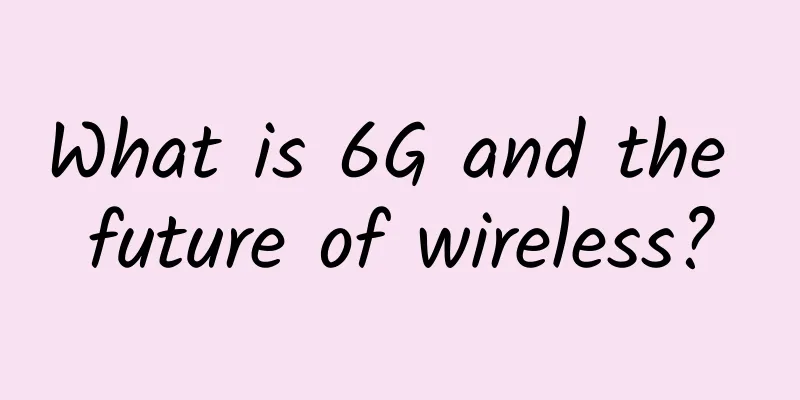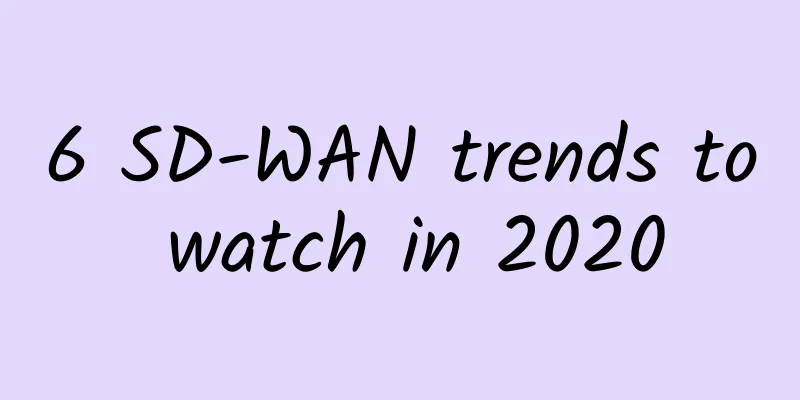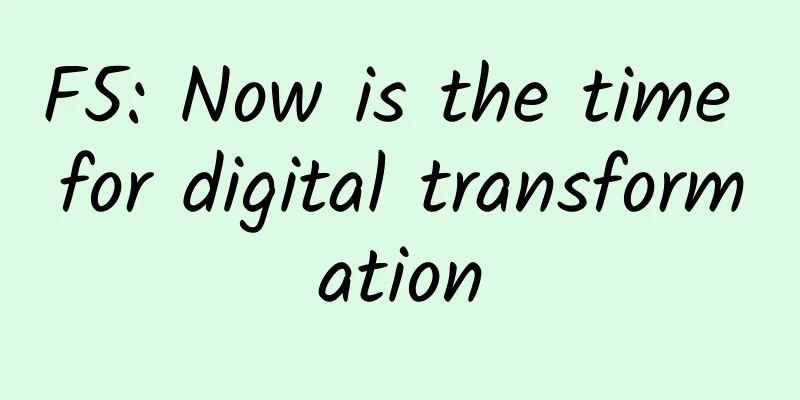What is 6G and the future of wireless?

|
While 5G is still being rolled out to replace the aging 4G standard, its successor, 6G, is already in development. Like its predecessor, 6G networks are expected to be faster and handle increased bandwidth with lower latency. 6G networks are expected to offer more diverse capabilities than their predecessors and are more likely to support applications beyond current mobile applications, such as virtual and augmented reality (VR/AR), artificial intelligence, and the Internet of Things (IoT). It is also speculated that mobile network operators will adopt a flexible, decentralized 6G model, including local spectrum licensing, spectrum sharing, and infrastructure sharing. All of this will be handled through intelligent automated management based on mobile edge computing, short packet communications, and blockchain technology. New wireless communication standards are developed approximately every decade, and 6G is expected to begin to come into play around 2030. For now, nothing is set in stone regarding 6G, and even its name could be replaced by something else. With that in mind, here are some theoretical aspects of 6G and what it might offer when it is eventually deployed. As 5G rolls out, consumers will continue to use more mobile devices and consume internet data at increasingly higher speeds. While telecommunications still rely on 4G for consumer use, 5G is replacing the aging technology, albeit very slowly, with most deployments in densely populated cities. The 4G/LTE standard, introduced in 2009, was a game changer for mobile devices as it increased data speeds and allowed users to stream high-definition movies, play games, and transfer large amounts of data at speeds of about 33 Mbps. 5GIt surpasses the capabilities of 4G by leveraging microwave and millimeter wave technology to increase its speed to around 900 Mbps or more. These higher speeds and bandwidths are comparable to commercial broadband providers, allowing for more applications beyond media streaming. The Internet of Things and connected devices will have real-time sensing capabilities. Edge computing can tap into the cloud and access data instantly. Healthcare providers can get instant knowledge from patients wearing medical devices. 5G offers applications in retail, industry, agriculture, and manufacturing. The list is almost endless, but it will be some time before we see the true potential of 5G before the new technology is deployed around the world. Significant differences between each standard include speed and application. (Credit Cabe Atwell) 6G TechnologyAs mentioned above, 6G is still in the development stage and no factual information is available about its technology or capabilities. It is speculated that most telecom companies will adopt a flexible, decentralized business model with local spectrum licensing/sharing and infrastructure sharing similar to 5G. According to a 2019 paper from Virginia Tech, engineers describe 6G as a fully integrated internet-based system that provides instant communication between users, devices, vehicles, and the surrounding environment. Imagine, from the Internet of Things to the Internet of Everything, this is what 6G can theoretically provide. Some experts believe 6G could reach speeds of up to 1 Tbps, a thousand times faster than the 1 Gbps that current fiber packages can deliver. The Federal Communications Commission (FCC) opened up the prospect of 6G speeds in 2019 by allowing companies to experiment with terahertz waves (AKA submillimeter waves) that fall within the 95 GHz to 3 THz spectrum. In contrast, 5G uses low-band, mid-band, or high-band millimeter wave (mmWave) and microwave technology to achieve frequencies ranging from 24 GHz to 40. While terahertz waves could boost 6G speeds into the 1 Tbps range, it would be subject to the same limitations as 5G in that it has a limited range and requires “line of sight” between the transmitter and the end user. Engineers at the University of California, Santa Barbara have designed a device that could help speed up the 6G development process using N-Polar gallium nitride high electron mobility transistors (HEMTs). These HEMTs incorporate a junction between two materials with different bandgaps that act as a channel, rather than the doped regions commonly found in MOSFETs. As a result, HEMTs allow devices to operate at higher frequencies (140THz to 230 THz), like those required for 6G. Last year, researchers at Nanyang Technological University in Singapore and Osaka University in Japan designed a terahertz wave chip that can be used for 6G. Earlier this year, engineers at Millimeter Wave Products developed an amplifier for the G band that operates in terahertz waves. These are some of the tools that can help 6G achieve and move beyond the research stage. Given the slow pace of 5G deployment, it may take a decade or more for 6G to become a reality. Potential applications of 6GIt’s not easy to know what 6G will be capable of at this stage, but if it’s anything like previous standard deployments, the impact could be huge. Self-driving cars, drones, smart factories, and artificial intelligence have received a lot of attention during the rise of 5G. Some experts believe 6G could advance these applications further, and even allow AI to keep coordination and running smoothly. Self-driving cars might leverage collaborative AI to talk to others for navigation, pedestrian/object avoidance, and traffic updates. AI and edge computing could also enable devices like traffic and streetlights to act as network antennas for the surrounding area, allowing vehicles and people to stay connected to Wi-Fi. VR and AR are likely to become even more immersive. Imagine feeling tangible cell surfaces and objects through connected implants or even wireless human/computer interfaces. A 2019 white paper from Virginia Tech describes smartphones eventually being eliminated in favor of wearables, headsets/glasses, and multisensory extended reality (XR) implants. Others envision a complete fusion of cyberspace and physical reality. Imagine thinking about any given subject and then being able to access data stored in the cloud for more information—the ultimate cheating tool for students. Of course, these potential applications are speculative, as research into 6G is still in its infancy and 5G is still several years away from full deployment. The internet may even need to be redesigned to support 6G. In some cases, all of these devices will require constant power, relying on batteries and a stable connection to the grid. All of this manufacturing and energy use may also be damaging to the ecosystem unless they can be tied to sustainable energy sources. That being said, 6G certainly brings more to the table than its predecessors, at least in speculative theory, but if any of these applications come to fruition, it would be an exciting prospect. |
<<: Can 5G messaging become a moat for operators in the digital economy era?
Recommend
China Mobile may withdraw all 3G networks by 2020, but terminals still need to support GSM
At the Global Terminal Summit held recently, Chin...
Patent empirical analysis of opportunities and challenges in China's development of 6G communications
Compared with 2G communication network, 3G realiz...
How did the No. 1 brand of domestic load balancing products become successful? Here’s the answer from Deepin Technology!
According to IDC data in the first quarter of 201...
DediPath Halloween 50% off all VPS, 1Gbps unlimited traffic starting at $10 per year, 40% off dedicated servers
DediPath has launched a Halloween promotion, offe...
Understanding Deterministic Networks in Seconds: Playing with Queues (Part 2)
The previous section introduced the evolution of ...
5G and IoT bring big data boom
When interest in Hadoop began a few years ago, WA...
How to choose an operation and maintenance monitoring platform that suits you? Zabbix, Prometheus, Grafana
As an operation and maintenance person, operation...
Opening a new era of network, Cisco takes you to experience an unprecedented network
[51CTO.com original article] In what direction wi...
Sent a data packet to xxxhub and found...
[[442879]] Hello everyone, I am Xuanyuan. That da...
The Ministry of Industry and Information Technology responded to the withdrawal of 2G/3G networks: an inevitable choice for upgrading
Recently, the Ministry of Industry and Informatio...
The past and present of AlphaGo
Why did AlphaGo focus on Go instead of Mahjong? L...
The Internet is like this: Network optimization practice for quick payment transaction scenarios
introduction In recent years, with the developmen...
80VPS: 330 yuan/year KVM-2GB/40GB/3M/Hong Kong & Japan & South Korea data centers
80VPS is a long-established Chinese hosting compa...
【Funny story】An attack launched by a network cable
Not long after I entered college, I encountered a...
HostYun: Los Angeles CN2 GIA line AMD series restock, native IP monthly payment starts from 22 yuan
HostYun is a domestic hosting company (formerly k...









